Who doesn’t love a good anchor chart!? While we love a beautiful, professionally designed poster as much as the next person, there’s just something about a huge piece of paper and a stack of coloured markers that we can’t ignore. So we pulled together some of our favourite anchor chart ideas from teachers. After all, teachers love to share, just like us!
What Is an Anchor Chart?
You’ve seen them all over Pinterest and heard about them in the staffroom, but if you’re new to the anchor chart realm, let’s catch up! An anchor chart is a way to display procedures, processes, strategies or concepts that are important to current units of work. They serve as instructional support tools or ‘anchors.’
Made from a big piece of paper and incredibly easy to make — really, you need some markers, and you’re all set — anchor charts are a fantastic way to support the creation of a visible classroom. More importantly than that, anchor charts cater specifically to your student group and their learning goals.
There are three basic types of anchor charts you will likely end up using in the classroom:
- Procedural anchor charts reinforce the teaching of classroom routines and procedures. For example, you may use them to inform fast finishers on what procedures to follow when they finish early.
- Strategy or process anchor charts support students in developing strategic behaviours. So you may set up a worked example of a problem on your strategy anchor chart, for example.
- Vocabulary anchor charts provide exactly what the name implies — vocabulary that students learned during a lesson, sort of like a glossary to refer back to.
How Do You Create an Anchor Chart?
Creating an anchor chart should be a collaborative process with your students. The goal is to teach as you create the chart and then for the chart to remain as a visual reminder of the lesson they just learned — or learned a while ago!
Here are the steps to creating a stellar — and effective — anchor chart.
- Create an outline or frame. This will not only help you in building, but it also helps lead the students’ eyes through the chart. A good anchor chart really stands out to students — which is why we created anchor chart borders, title and lettering guidance to make your anchor charts look good AND stand out!
- Add a heading. What’s the objective of the anchor chart? What does it teach students? This is your heading!
- Talk it through with your students. This is the crux of a successful anchor chart — discussing what should be included with your students. Not only will this help you tell what they took from the lesson (kind of like an exit ticket for the whole class), it also helps to remind students of the lesson and cement the knowledge in their minds. What’s more, being part of the creation gives your students buy-in and ensures they’re more connected to the objective of the anchor chart.
- Hang your anchor chart where students can see it. This is the goal, after all!
Take a look at these amazing anchor charts and see how their teacher creators have broken down important information for their students.
Anchor Chart Ideas
Prefixes and Suffixes
Toy Story fans will love the Slinky Dog reference in this English anchor chart for teaching prefixes and suffixes. Not sure you have the drawing skills to match Pixar? Don’t worry; teacher Sierra says she projected this one onto the paper and traced it!
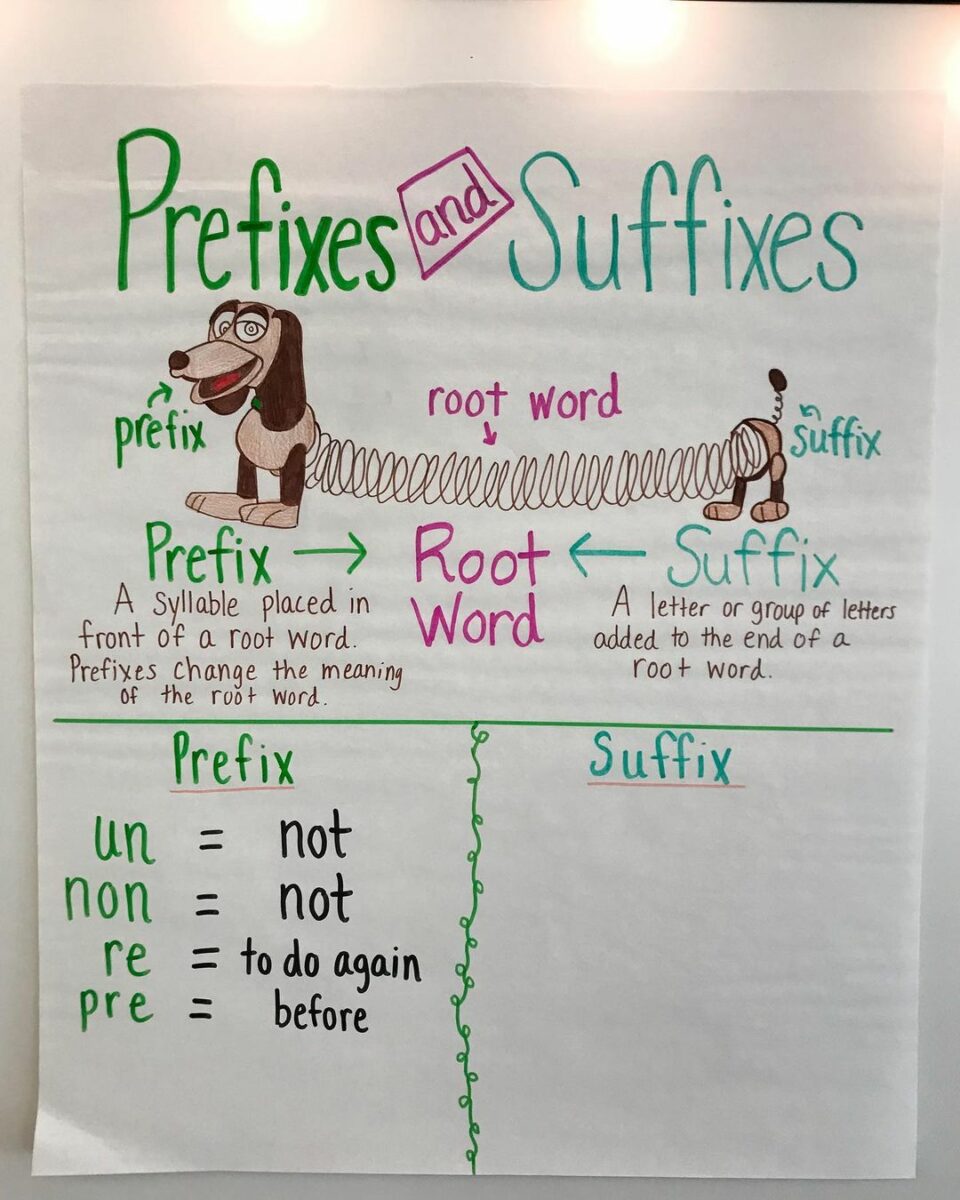
Photo courtesy of American third-grade teacher Sierra
See our teacher team’s favourite prefixes and suffixes resources for more ideas!
Why Writers Write
Photo courtesy of teacher Miss Dancisin
As we know, there are many author purposes out there, and teacher Miss Dancisin crafted this colourful anchor chart that covers some important reasons ‘Why Writers Write.’ This is a great example of a poster that can be displayed in your classroom year-round to help your students with their reading and writing lessons.
My Rights As a Reader
Daniel Pennac’s book The Rights of the Reader provided inspiration for this anchor chart created to let students know there’s more to reading than just grabbing a book off the shelf.
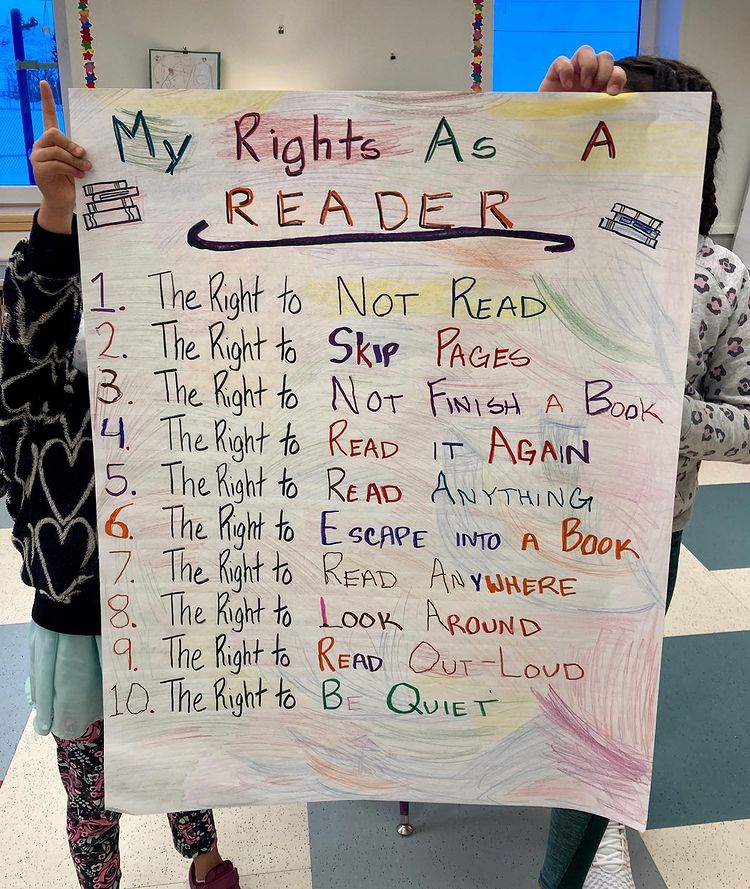
Photo courtesy of teacher Mr. Christian
Why not hang this chart up in your classroom library or reading corner to remind students about their rights?
ADE Author’s Purpose
Photo courtesy of teacher Lauren Dustin
‘When life hands you Author’s Purpose, you make lemonade.’ We love teacher Lauren Dustin’s creative take on presenting an author’s reason for writing using a lemon and lemonade to present the author’s purpose.
She used the acronym ADE to stand for:
- Answer
- Describe
- Explain the author’s purposes
Anchor Chart for Spelling
What an awesome layout for this key spelling concept! Reacher Melissa Bergsteinsson adds to this chart each week after introducing a new vowel.

Photo courtesy of teacher Melissa Bergsteinsson
Letters, Words, and Sentences
Another amazing early literacy anchor chart here — this time turned into a hands-on activity where students helped to sort and glue the letters, words and sentences onto the chart! This chart comes from kindergarten teacher Jessica Hernandez.
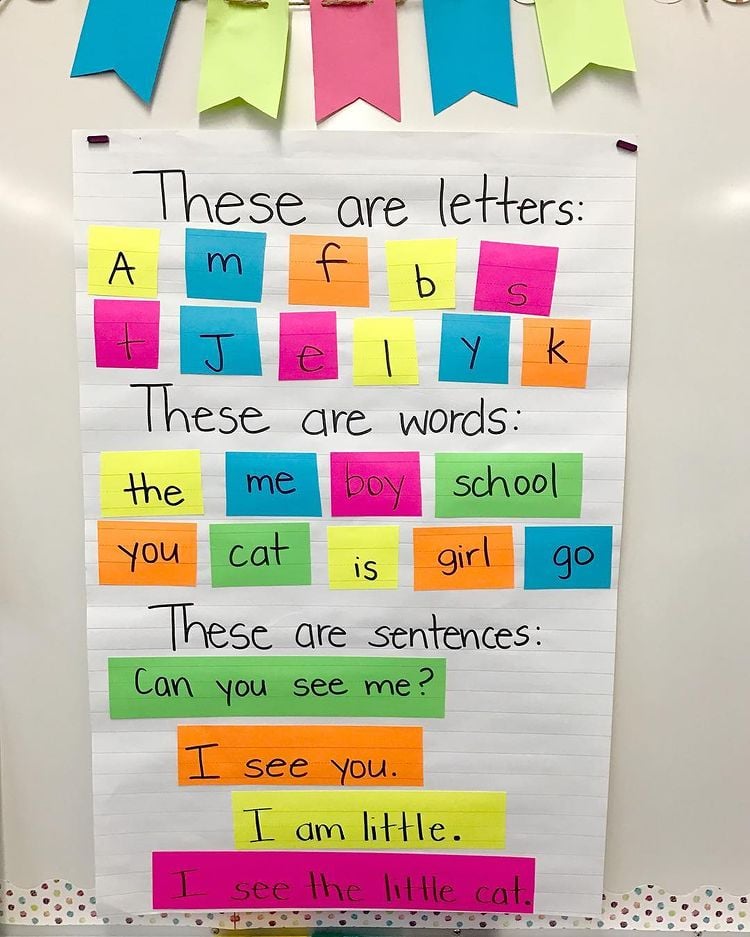
Photo courtesy of Kindergarten teacher Jessica Hernandez
Class Goals Anchor Chart
Clear goals are important, and American teacher Kaylee Williams made this anchor chart not only to give her students a goal to focus on but help them chart their progress.
As Williams said of her anchor chart, ‘We decided on a goal we wanted to focus on mastering first & what our reward would be when we accomplished it. Both classes decided they wanted to work on bringing their best selves & all items needed to class each day. We discussed what this looked like and started working hard on it! They’ve been doing so well to meet this goal, my homeroom actually finished the checklist & got their reward yesterday!’
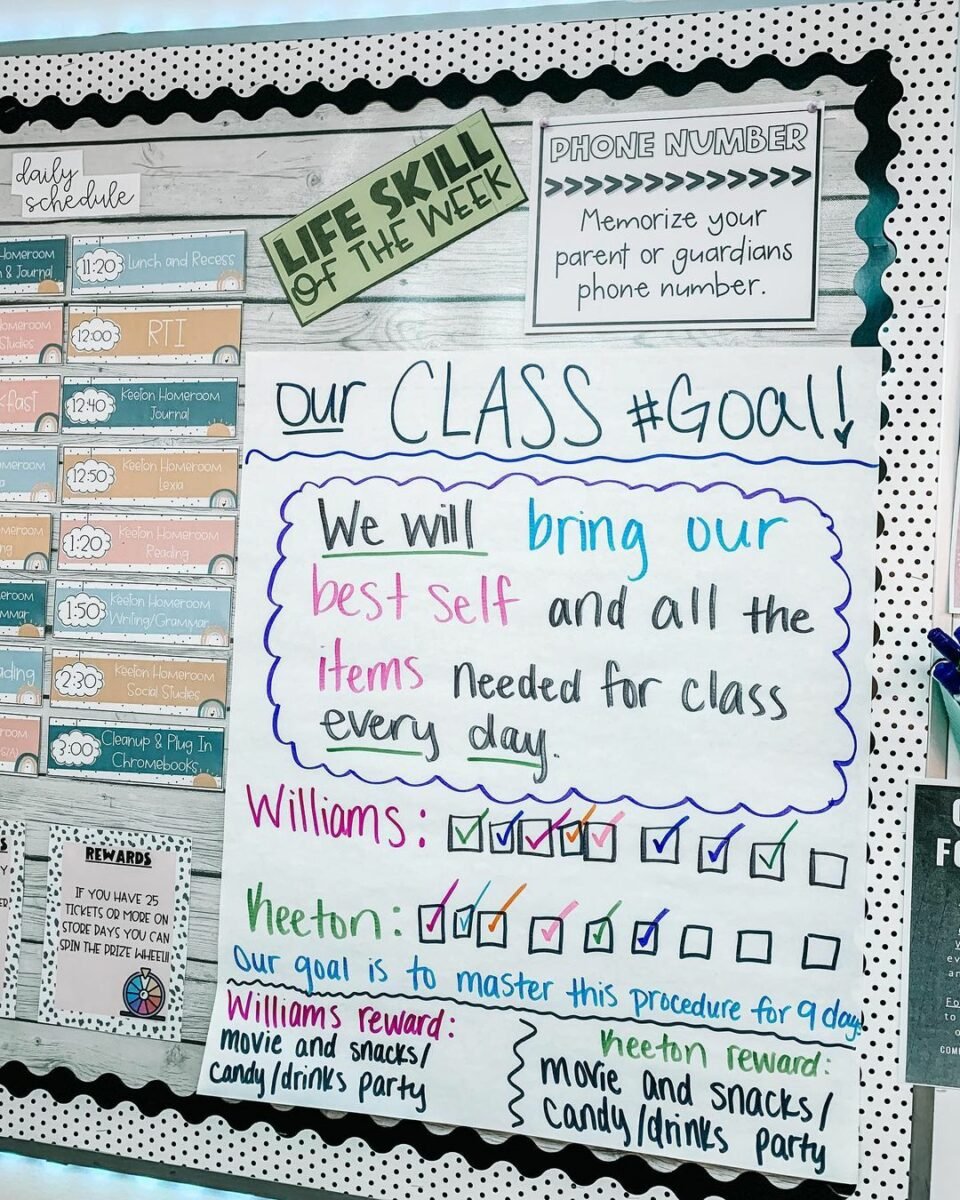
Photo courtesy of teacher Kaylee Williams
Reading Strategies
With the main idea in the centre and each element or aspect surrounding it, this is another simple way to organise information for your anchor charts visually. This context clues chart comes from kindergarten teacher Amanda Wagenhofer.
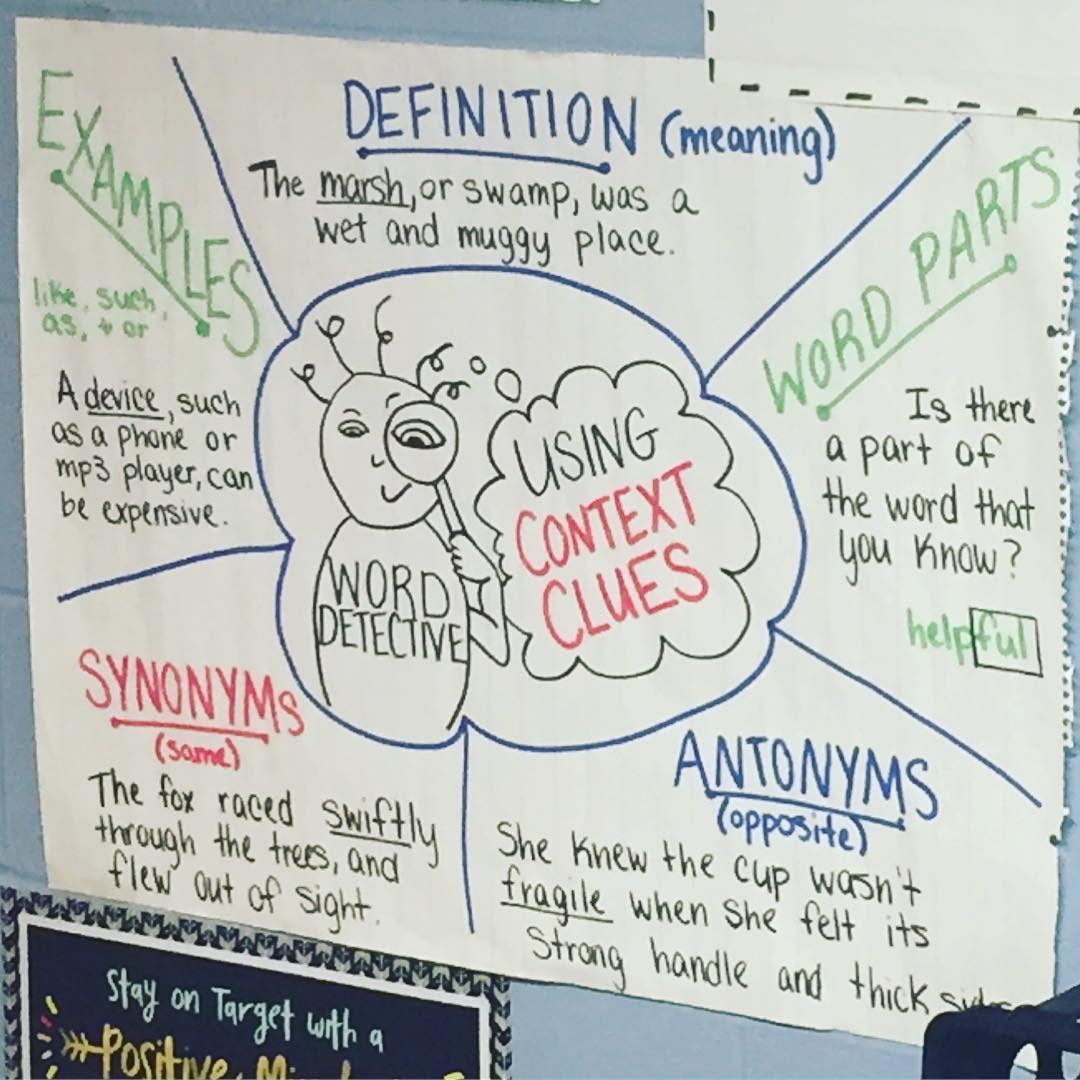
Photo courtesy of kindergarten teacher Amanda Wagenhofer
Spy-Themed Math Anchor Chart
When in doubt, make a maths lesson about spies! Challenge your students to be spies to spot the missing side of a triangle, square or rectangle. Teacher Velckis, who goes by @yourteacherbestie on Instagram, shared this James Bond-inspired idea for teaching students about area and perimeter on an anchor chart.

Math Key Words Anchor Chart
Vocabulary anchor charts can be just as beneficial in maths class as any other subject, as Habeeba (@baiginelementary on Instagram) shows in this fun visual reminder of the meaning of words that relate to equivalent fractions.
When building an anchor chart for maths around vocabulary, getting those keywords front and center —along with definitions — will help your students in the same way that a maths word wall might.
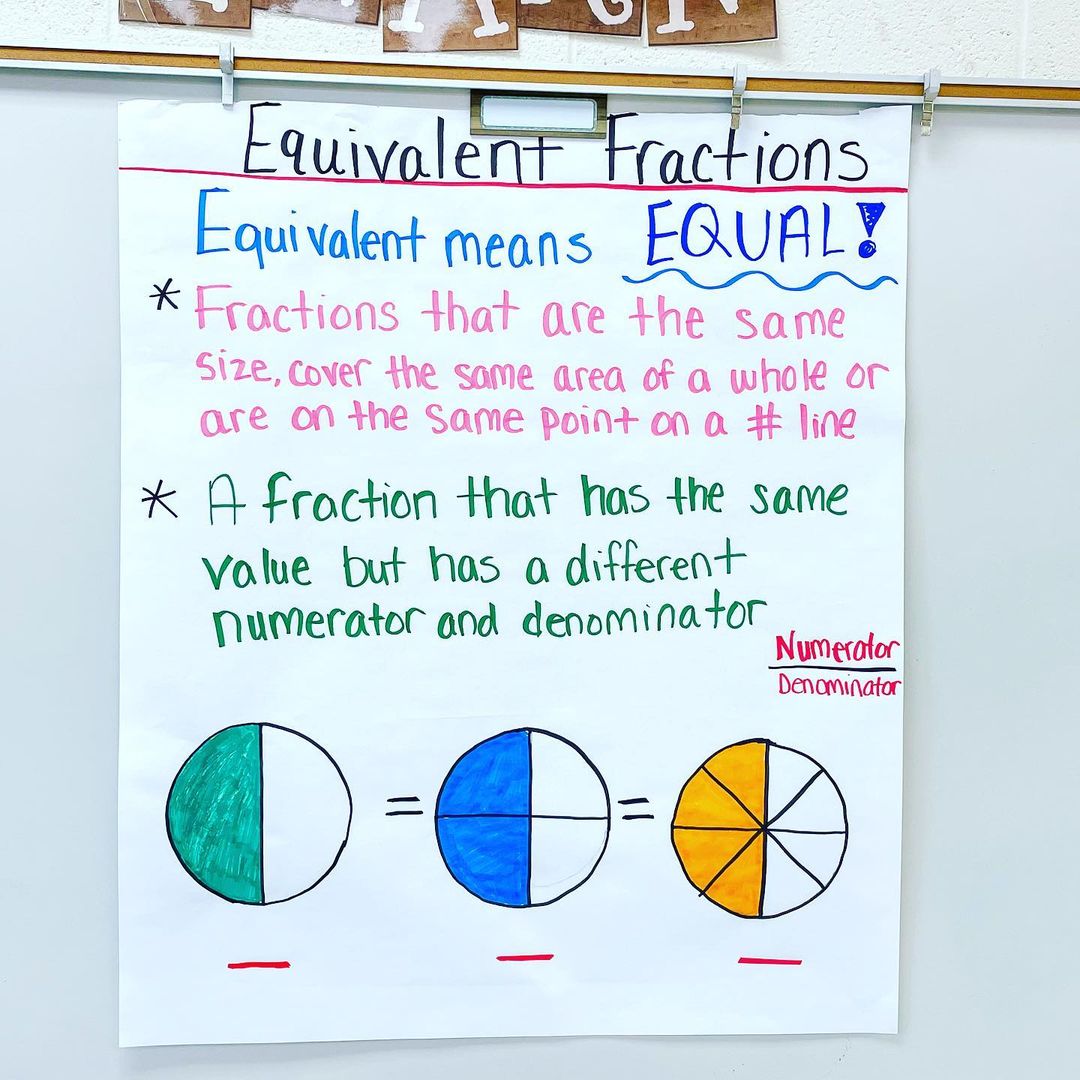
Just Add Water
How cute is this science anchor chart about how plants grow from kindergarten teacher Mrs. Lyon? The dots and dashes around each element are a simple way to add a visual pop that makes it truly stand out in students’ minds.
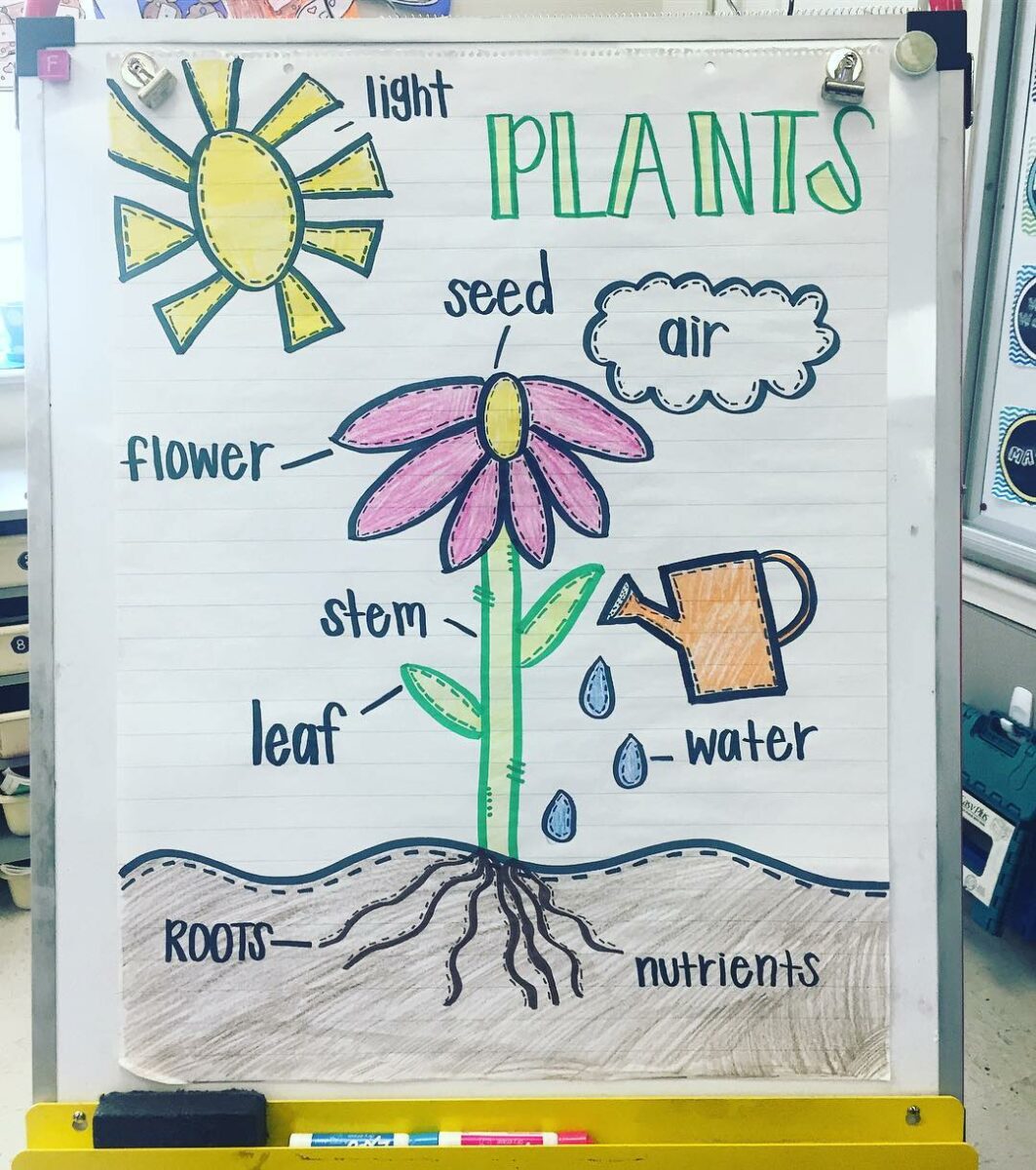
Photo courtesy of kindergarten teacher Mrs. Lyon
OREO Writing
Perhaps the only thing missing from this OREO Writing anchor chart display is an actual packet of Oreos. Yum! The chart comes from teacher Alexandria Sirles and is a great demonstration for opinion writing.
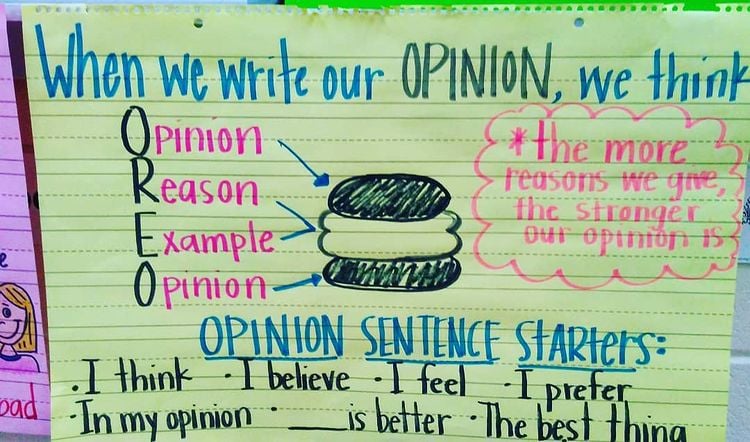
Photo courtesy of teacher Alexandria Sirles
Short on time? Download an OREO Persuasive Writing Poster already designed for your classroom!
Text Feature Vocabulary
A good text feature anchor chart can simply provide students with the vocabulary they need to identify text features. Teacher Lexi Holmes (@lexiloveslearning on Instagram) shared this chart she created to do just that, adding bits of colour to make the vocabulary pop right off the page.
By cutting out examples from real non-fiction texts, Holmes gives students real-world examples of what to look for on their own.
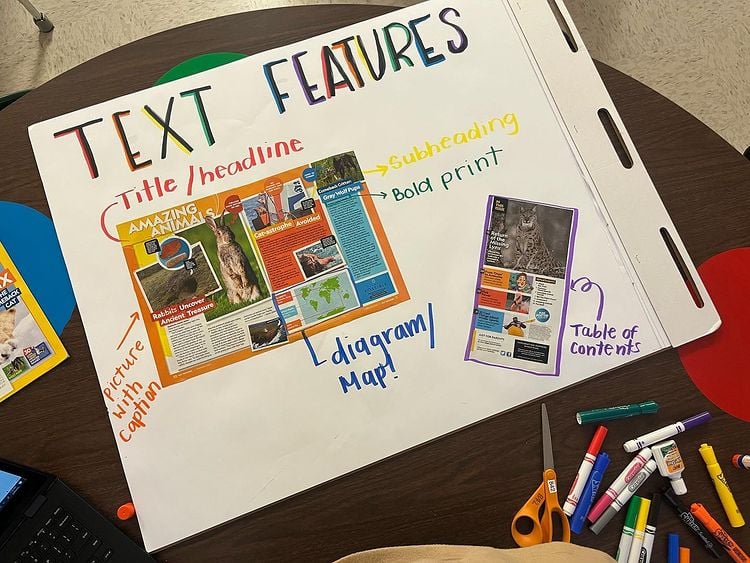
Download one of our teacher team’s favourite non-fiction text card activities.
How to Use Text Features
Teacher Monique LaBarre (@goingfarwithmisslabarre on Instagram) shared this text feature anchor chart with us, and we love how it very simply lays out the ways students can use each of the features in a text to find information they need.
For example, the chart reminds students to check the glossary if they’re looking for the definitions of words used in the text or to refer to the table of contents to find out just what is in the book.
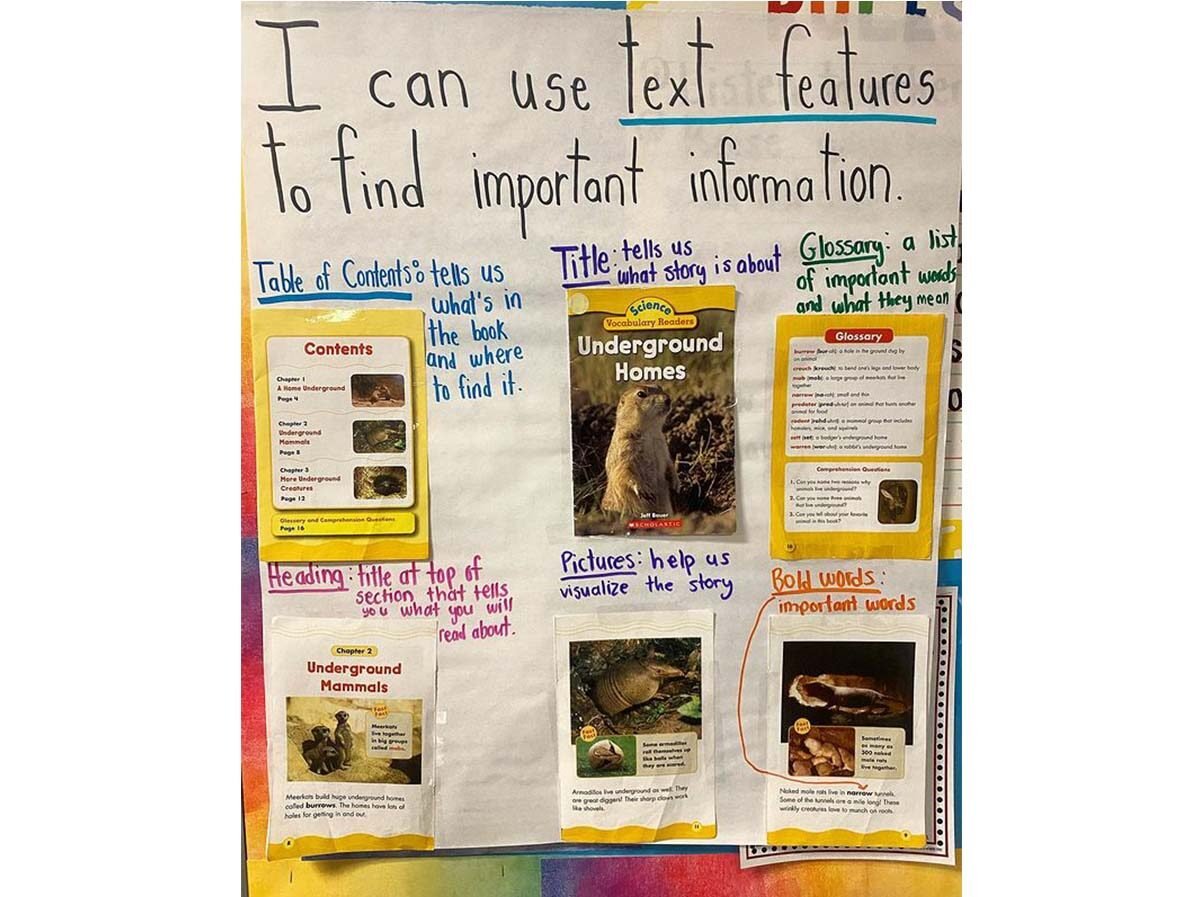
Wow! There are some skilled teachers out there with a great eye for colour and visual balance!


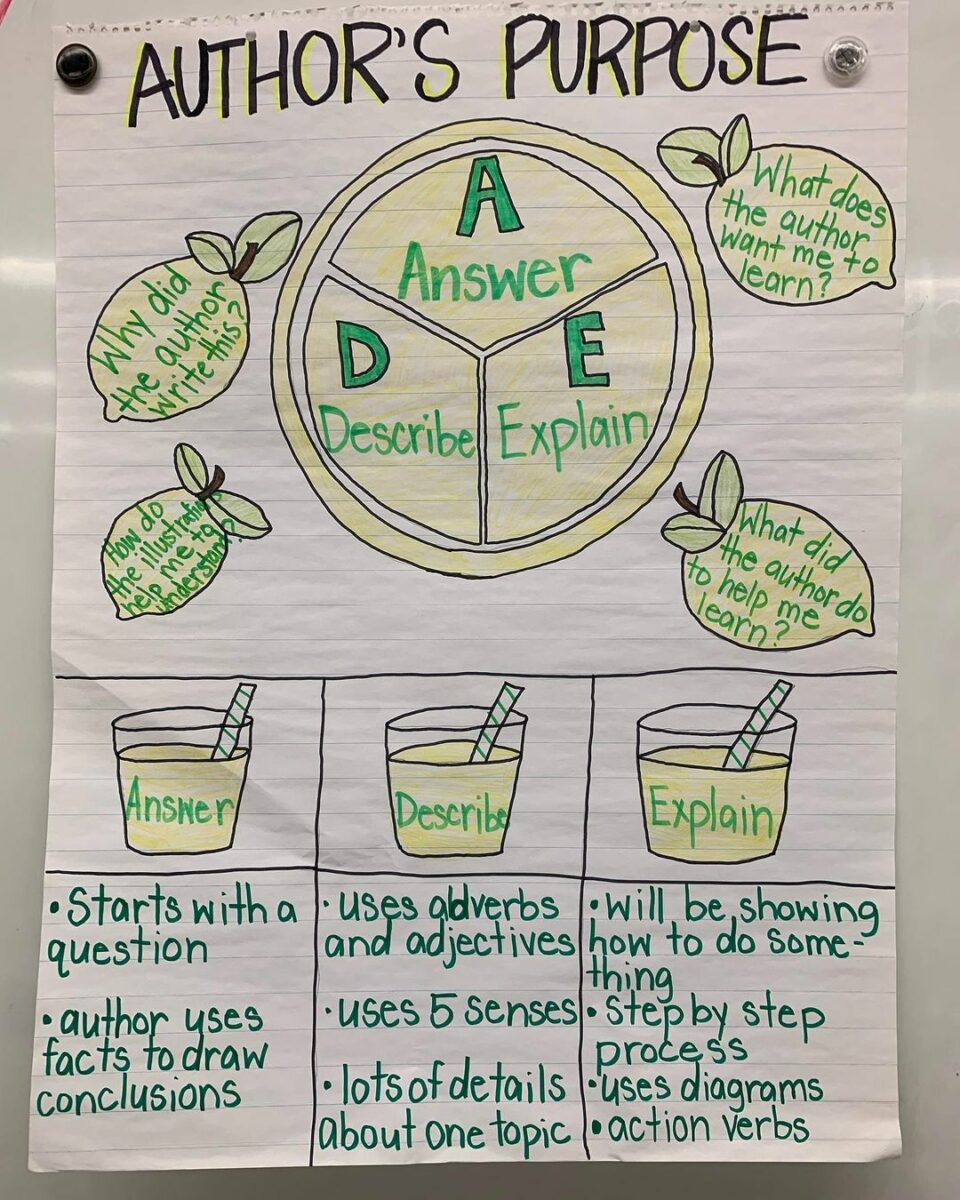
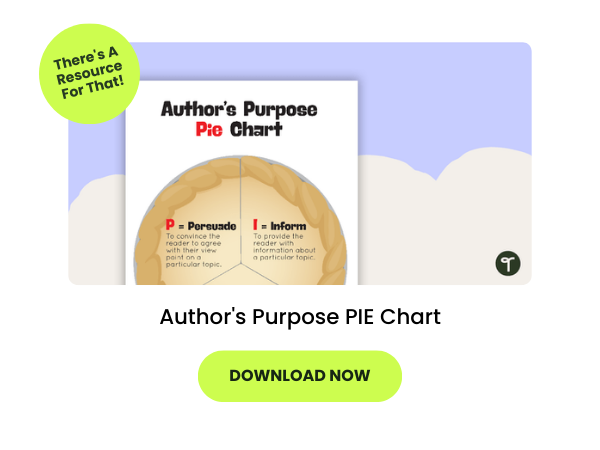






I liked so much your instructions,from that I can improve teaching skills.
Hi Tome, There are certainly lots of fantastic ideas on these anchor charts. Thank you for your comment! Kind regards, Cassie